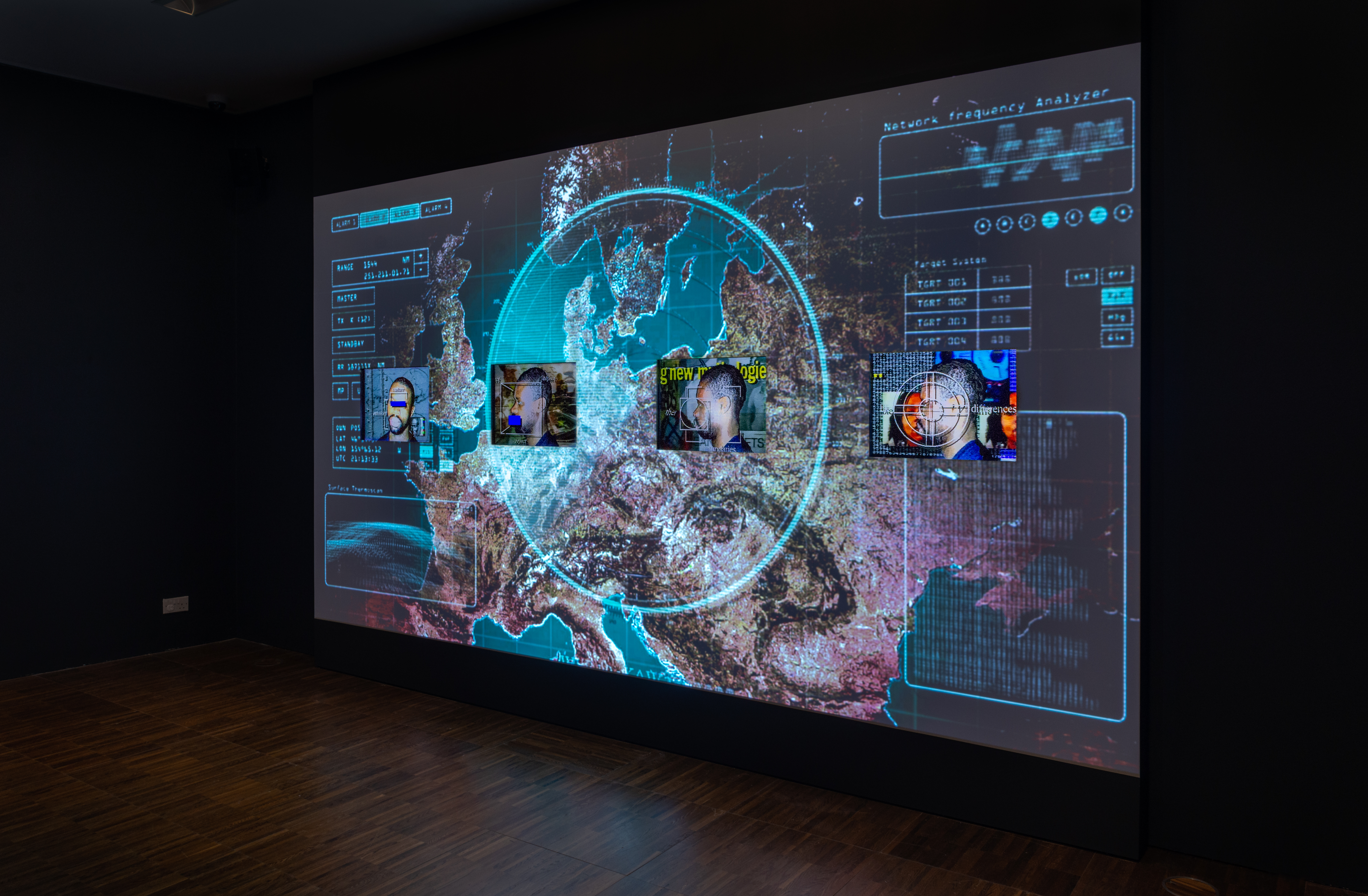By adopting a research-driven approach and using a variety of media – from painting to photography, installation, video and computer-based interactivity –Keith Piper’s works often have an autobiographical element to them. Part of the creative process has been informed by the influences of the socio-political climate and analysis of his experiences and identity. Race, ideology and technology are central to navigating Piper’s work, particularly regarding the impact of how historical events are understood and reproduced in the present and their potential futures.
The multi-media installation entitled Surveillance: Tagging the Other (1991) was created in response to issues arising in the run-up to the instigation of the European Union in 1992. The four monitors, installed in a row, show the artist’s head being a target of surveillance and control. His black body is scrutinised in terms of ethnicity, gender, citizenship and appearance. Sound is an important part of the work, featuring fragments of news reports related to the rise of racist attacks, anti-Semitism and right-wing tendencies across Europe. Central to evoking these techniques is the layering of audio and mixed media to encourage a reflection on the power and legacy of narratives we are told and the methods they are communicated by. Techniques within Surveillance: Tagging the Other and in other installations include the incorporation of sampling, visual montage such as collages, found objects and text.
Despite being created in 1991, the work’s relevance persists today. Recent events relating to Brexit have been centre stage in UK discourse via the media and newspapers. The work also connects with wider issues around surveillance. Following the highly visible death of George Floyd, demands for racial equality and a recognition of racial inequality have permeated social discourse.


